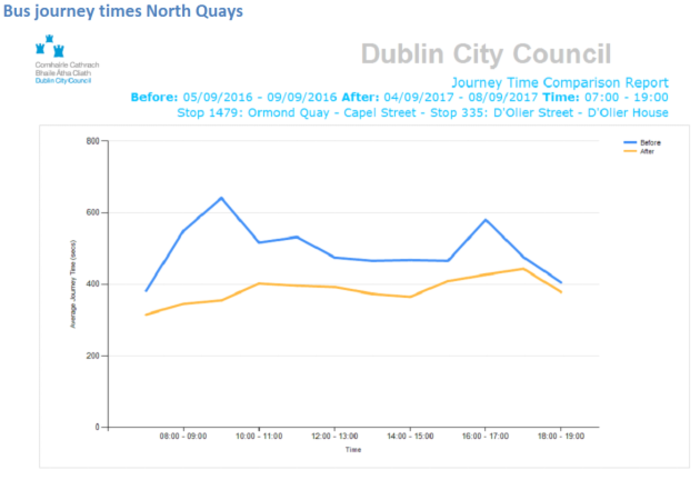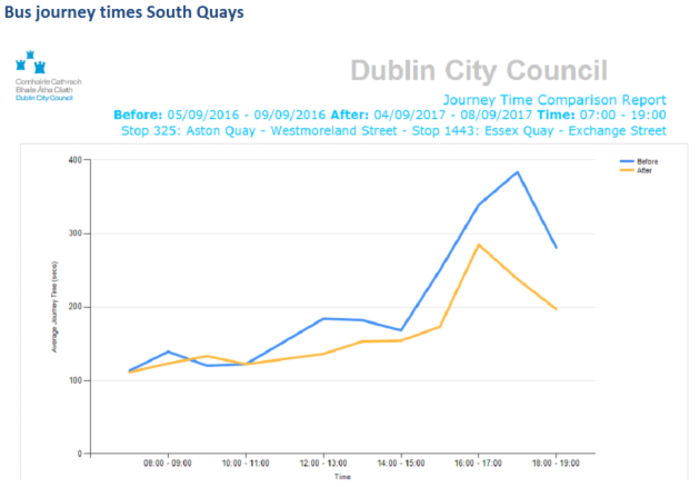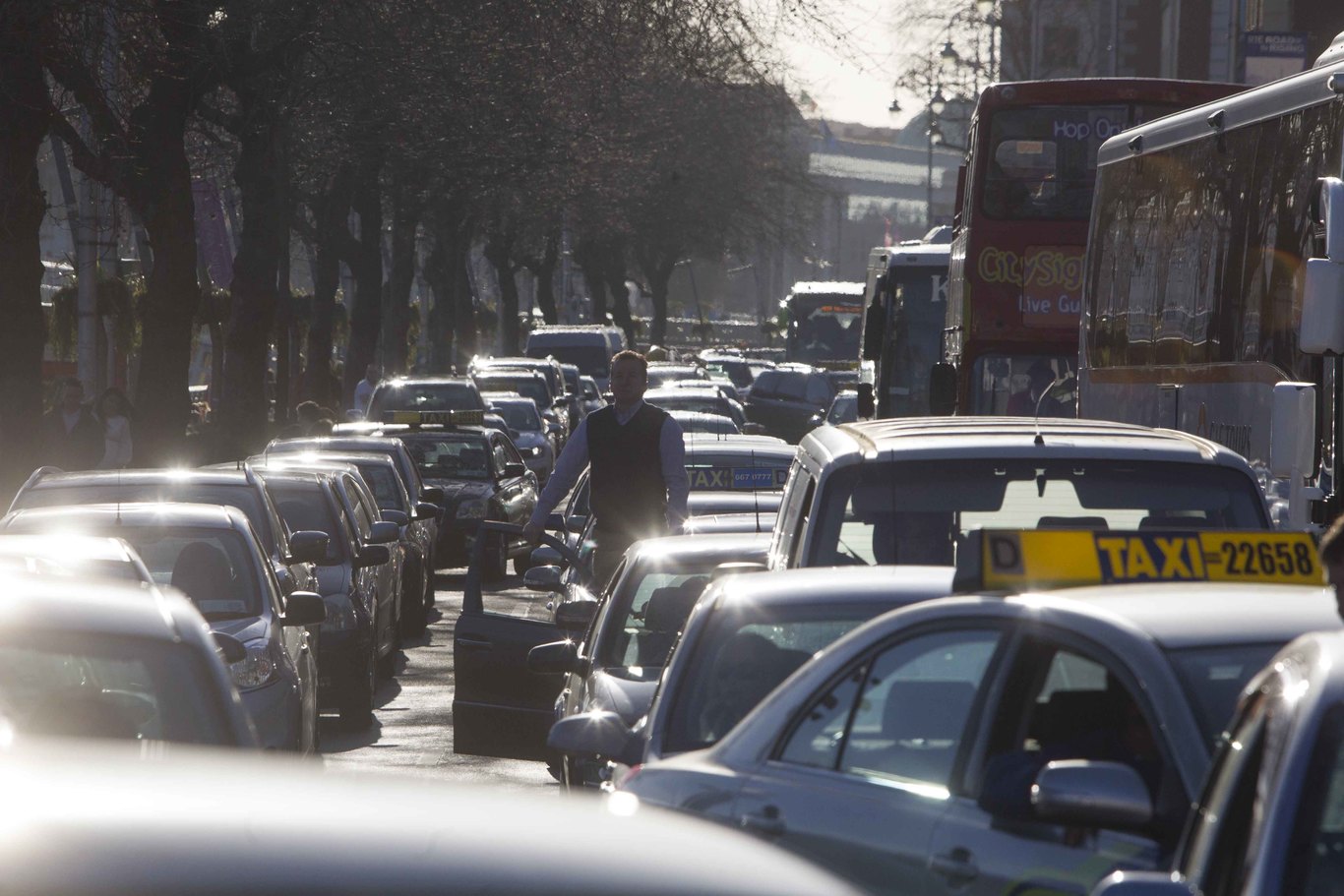Dublin businesses say traffic changes have made commutes worse, not quicker
Dublin Chamber said new traffic measures along the quays are affecting the whole city.
DUBLIN CHAMBER HAS claimed that data released by the National Transport Authority (NTA) to show the success of new traffic measures for Dublin’s quays is at odds with rising commute times across the city.
Research published today by the NTA said that some bus journey times on the quays are up to 45% quicker following the roll out of the bus prioritisation measures in the past few weeks.
The data, which was collected by Dublin City Council, compared bus journey times during the first week of September this year and the same period in 2016.
The analysis focused on travel time between Ormond Quay and D’Olier Street on the north quays and Aston Quay and Essex Quay on the south side of the River Liffey.
Dublin Chamber, which represents over 1,300 companies, has said the data is at odds with journey times across the capital.
The organisation’s own survey of commuters undertaken since the new measures were put in place has shown that nearly two-thirds of respondents reported longer commute times.
The chamber’s survey, which had 500 responses, focused on commuters who take public transport, drive and cycle to work within the M50 belt.
Some 2% of respondents to the chamber’s survey said there was an improvement in their commute time to and from work in the three-week period after the traffic changes on the quays took effect.

Click here for a larger version
Respondents to the survey also highlighted issues that businesses in the city were having with deliveries – nearly a third of respondents said delivery times had worsened over the previous month.
Dublin Chamber’s head of public affairs, Graeme McQueen, said the data released by the council does not confirm the success of the new bus measures along the quays.
He said the effects of the scheme are having wider effects on commuters’ journeys across the city and that the NTA should publish all bus journey times.
“Everyone accepts that change is required to the way in which Dublin city centre functions, particularly as a result of the new Luas Cross City line,” he said. ”But there is a lack of clarity about how and whether the changes will all work together.
“The release today of selective data regarding the north and south quays does little to reassure businesses and users of the city centre.”

Click here for a larger version
Analysis
The new bus measures along Dublin’s quays were put into effect at the tail end of August. The plans were introduced in preparation for the launch of the Luas Cross City service this December.
There is now only one lane for private cars along certain parts of the quays. Private vehicles are also banned from turning right from Bachelors Walk onto O’Connell Bridge.
During the first week of the scheme, no significant delays were reported along the quays by insurance firm AA.
The city council previously said further congestion is to be expected along the quays if the same number of motorists continue to use the routes instead of opting for public transport.
Further analysis by the NTA showed specific improvements to commuters’ journey times at different times during the day.
Journey times for buses on the north quays between Ormond Quay and D’Olier Street decreased by 37% between 8am and 9am and 45% between 9am and 10am compared with the previous year.
Significant journey time reductions – between 20% and 25% – were seen during other parts of the day.
On the south quays, bus routes on the Aston Quay and Essex Quay stretch decreased by 38% between 5pm and 6pm and by 30% between 6pm and 7pm.





